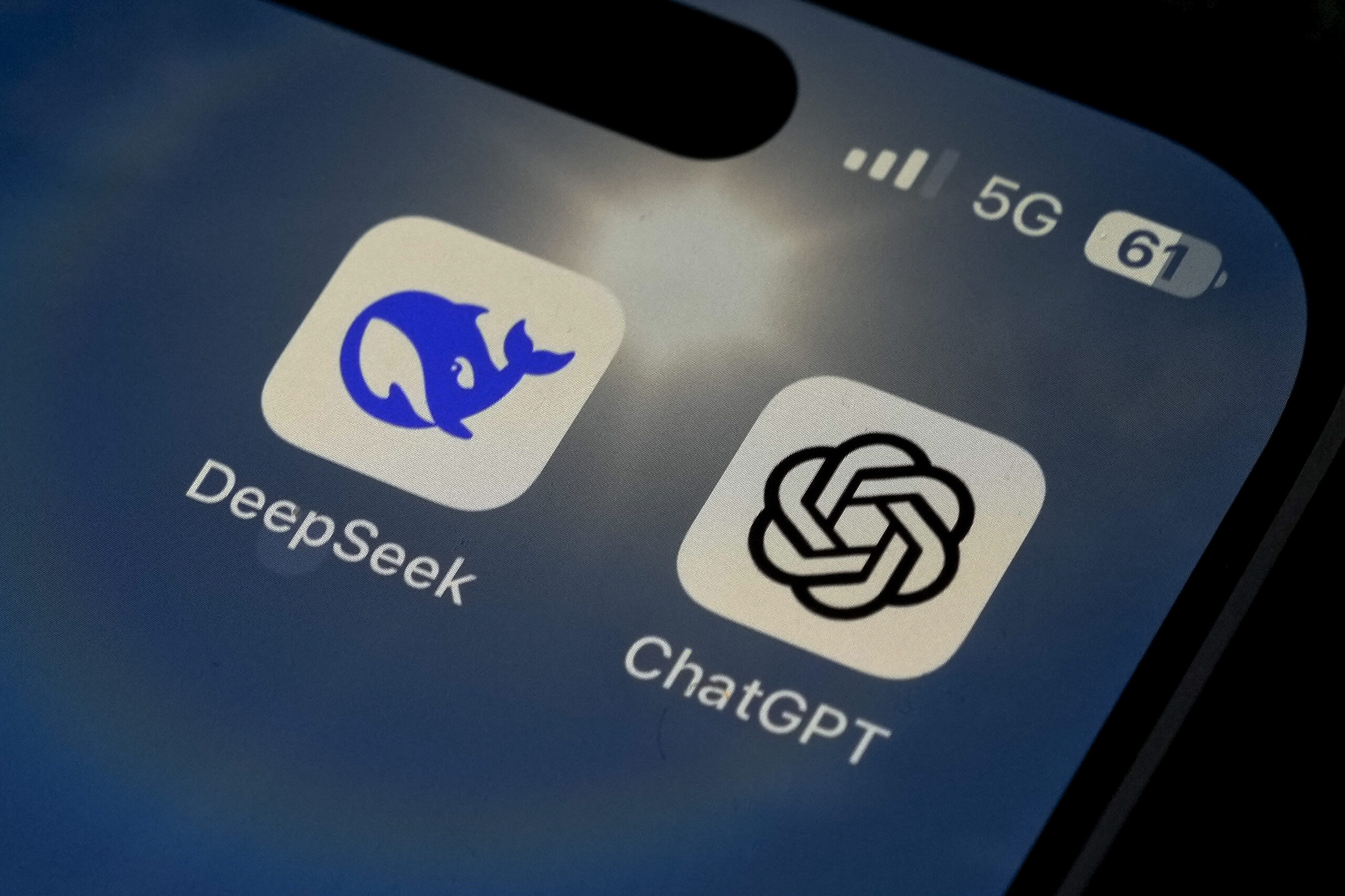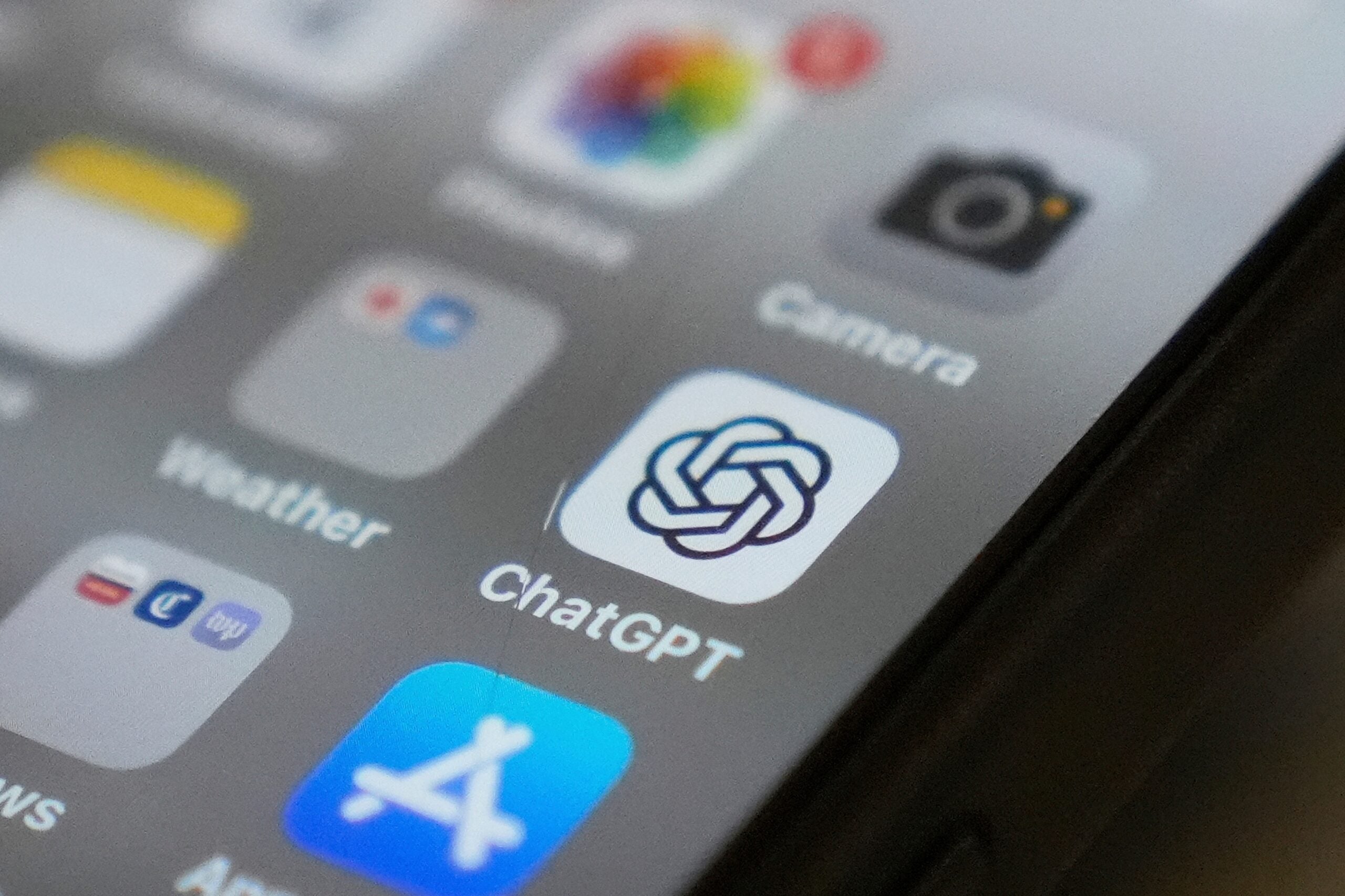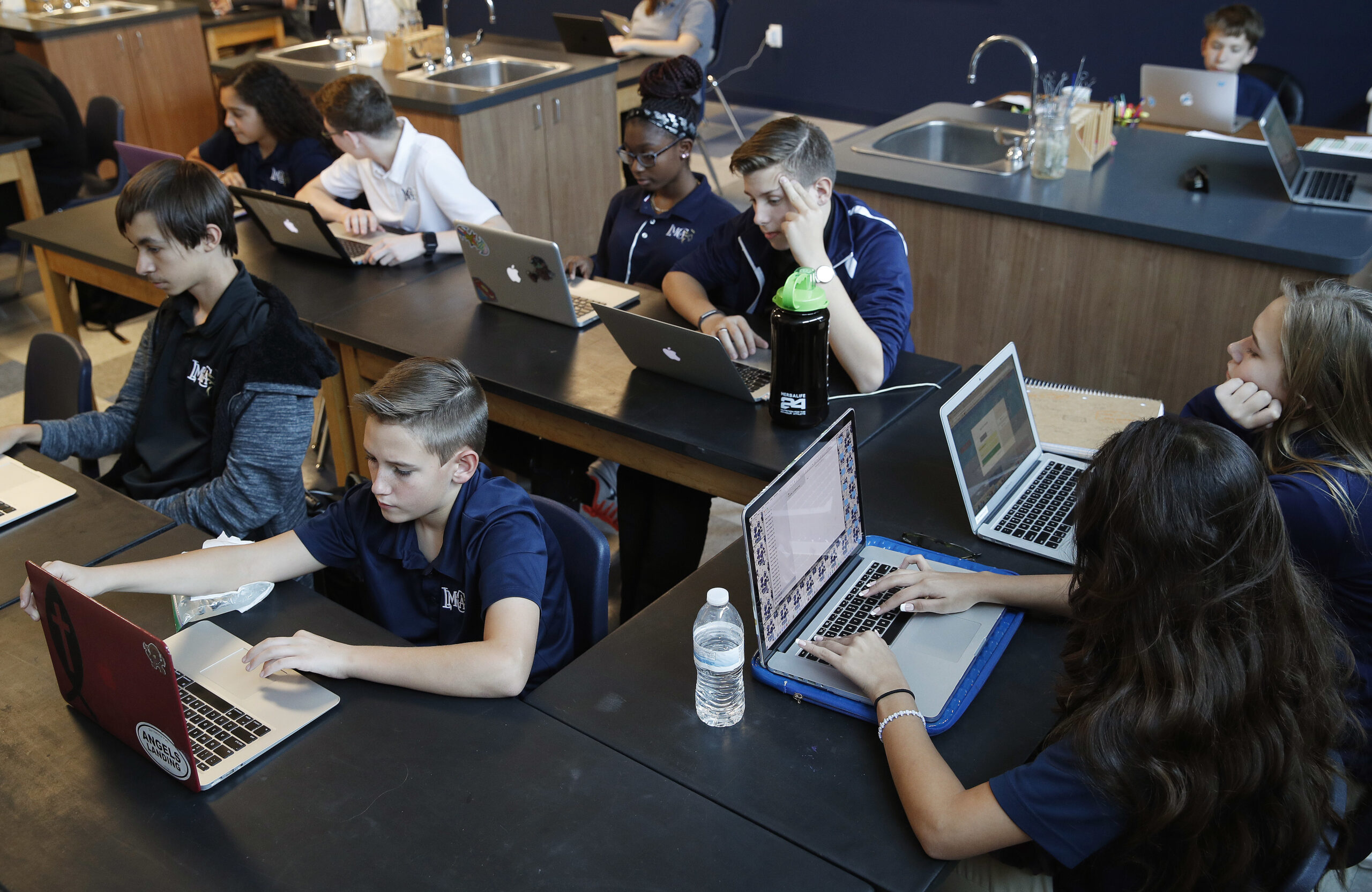Monroe High School associate principal Josh Wilson knows some of his students use artificial intelligence programs to help with their schoolwork.
Chatbots like ChatGPT and others are free and available online for anyone to access. The Monroe School District is like many others in the state that don’t currently have a formal policy for AI use in schools.
Wilson told WPR’s “Wisconsin Today” that he and other administrators are working through conversations about what that policy should look like.
News with a little more humanity
WPR’s “Wisconsin Today” newsletter keeps you connected to the state you love without feeling overwhelmed. No paywall. No agenda. No corporate filter.
“We know that even if we block it at school, kids are going to find a way to use this,” Wilson said. “So what’s the lesson that we want kids to have? To not access this whatsoever? Or to teach the kids how to use ChatGPT, while maintaining fidelity to an assessment that’s getting them to challenge themselves and to grow academically?”
The conversation started as an informal chat among principals, and now district leaders are convening broader groups of teachers and administrators to shape artificial intelligence policy.
Wilson has heard a wide range of opinions from teachers in his building. Some are concerned about AI doing all the work for students. Others are more eager to implement the technology to enhance student learning.
“What originally started as this conversation about, ‘How am I going to catch kids plagiarizing?’ turned into this larger conversation about what kind of assignments we want to give kids,” Wilson said. “What kind of learning experiences are important for our students at Monroe to prepare them for for the rest of their lives?”
When the topic of AI first came up among his colleagues, Wilson wasn’t very familiar with the programs and shared many concerns he’s heard from fellow teachers.
But as he spent more time with ChatGPT and other software, he developed a better sense of what it can do and why it’s important for the district to prepare for it. Wilson wonders if forbidding students from using AI could hinder them when they “go off to the workforce, or if they go off to college, and they are in a class with somebody who has been taught how to use AI in a productive, meaningful way.”
“That’s what I see artificial intelligence as: Not replacing the classroom experience, but challenging what it is that we want our kids to know and to do, as they move forward in their life,” he added.

Corralling the ‘Wild West’
The Unified School District of De Pere is being proactive about putting artificial intelligence into the classroom.
In December, the De Pere school board approved a pilot program for the use of AI software called Brisk Teaching in some of its 7th through 12th grade classrooms.
Kathy Van Pay, the district’s director of elementary curriculum and instruction, told WPR the program has already been rolled out to teachers, and they’re in the process of getting it into students’ hands next.
“We’re trying to get caught up, which I think is the case for most school districts,” Van Pay said. “We like to do things that we call ‘freedom within fences.’ We want to make sure that our atmosphere is safe and that we’re using things appropriately.”
Brisk is a web browser extension that can provide students and teachers with feedback and suggestions on writing assignments. Students can also interact with an AI chatbot within the software to prompt them through the learning process to help develop a deeper understanding.
The district is providing the curriculum for teachers to use with Brisk, so the artificial intelligence can only provide students with the learning material that is pre-set.
“For students, we don’t want them to be able to just do anything with it and have it be like the Wild West,” Van Pay said. “We use it to enhance the writing, but not to do the writing for you. Brisk provides suggestions, but it does not just do the writing for you.”
Van Pay sees this not only applying to any subject matter with writing assignments.
While it’s another new technology for teachers to train on, the hope is that it can make their jobs easier by removing some of the workload.
“Instead of having to go through every single piece of paper, they can provide some feedback along the way by simply putting portions of that paper, or the whole paper in artificial intelligence,” Van Pay said. “It saves some time.”
The district sent a letter to parents about what the software is and how it will work in their classrooms.
Depending on how well the pilot program goes, De Pere could expand Brisk to other classrooms or look to add additional AI tools in the future.
Van Pay and other district leaders will be taking in feedback from teachers and monitoring usage data from Brisk to determine next steps. Other school districts around Wisconsin will be watching, too, as they all navigate the artificial intelligence landscape.
Wisconsin Public Radio, © Copyright 2025, Board of Regents of the University of Wisconsin System and Wisconsin Educational Communications Board.







